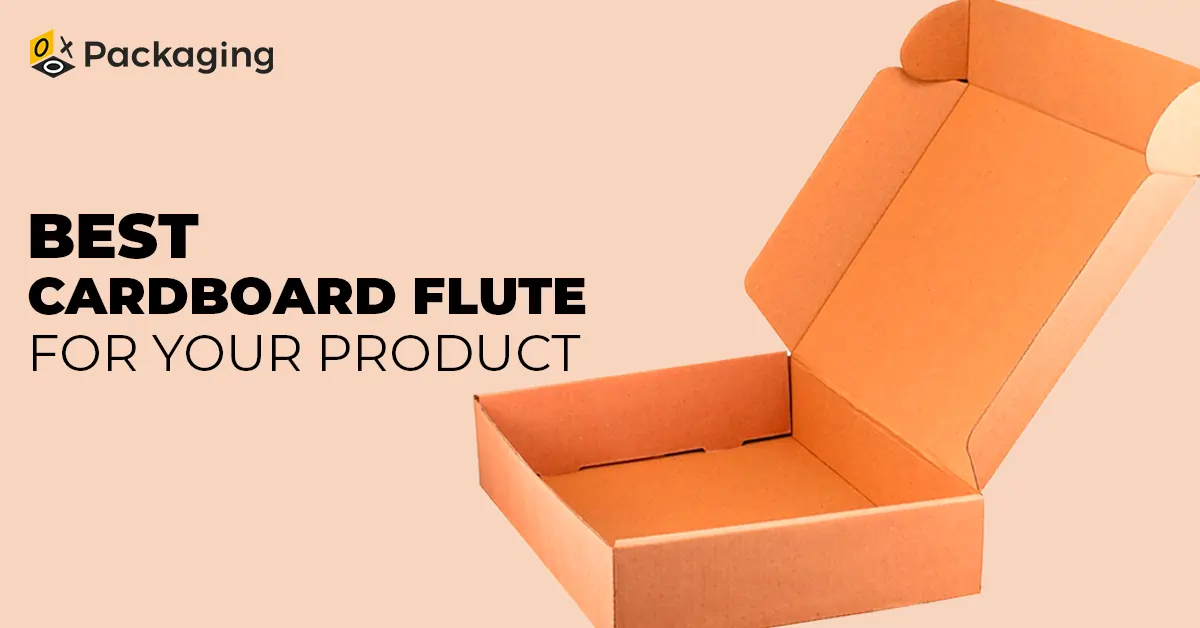Flute Selection 101: Decoding the Best Corrugated Flute for Your Product

Have you ever heard of packaging with corrugated flute?
You might be thinking about the music flute now. Any melomaniac would feel the same. But here, we are not talking about any musical instrument. We are talking about the cardboard flute, one of the cardboard packaging boxes' most important structural dimensions. Different flutes are available in the cardboard packaging, and each product requires a different one.
In this blog, we are going to analyze corrugated flute packaging deeply. Let's find out which is the best one to package your products.
What is a Corrugated Flute?
The cardboard board comprises one flute layer and two kraft paper sheets. Cardboard materials are usually employed to make shipping and mailer boxes.
In contrast, the corrugated flute is wavy in the structure between the two sheets of the kraft liner. The flute is what makes the corrugated boxes stackable, durable, and rigid.
The cardboard flutes come in different sizes, and these are referred to as “flute profiles.” The fluting helps to solidify the corrugated box structure. That is why corrugated boxes hold heavier items flawlessly and without breaking.
Role of Corrugated Flute In Packaging
Corrugated flute plays a distinctive role when it comes to packaging. The fluting provides enhanced strength, cushioning features, and insulation to packaging by creating an arch structure between flat linerboards. The pivotal role of the flute is to create a structural integrity of boxes, while the wavy-like layers resist pressure and impact, making the boxes tamper-proof and punch-resistant. Flute plays as a safeguard of boxes while minimising the packaging performance, with smoother printing.
Learn How to Choose the Right Flute for Your Corrugated Packaging
About 80% of the packaging in the United States is corrugated. As many products are shipped in corrugated boxes and mailers, it is crucial for businesses to select the right flute. Choose the right flute by analyzing different types based on your packaging products and business needs.
Also, keep in mind that thickness in flute material can’t replace packaging materials such as paper and bubbles to safeguard your products. Wall structure and weight also play an important role when it comes to choosing thickness for your flute profiles.
Less thick flutes are easy to fit on palettes are reduce shipping costs compared to more thick flutes. To gain a better understanding, explore flute profiles deeply:
Fluting Profiles in the Corrugated Cardboard
As we have mentioned before about fluting profiles, let's now discuss them in detail for your better understanding.
Five cardboard flute profiles include:
- E-Flute
- B-Flute
- EB-Flute
- BC Flute
- F Flute
There are two single-layered flutes known as the B-flute and the E-flute. And the two-layered corrugated flute is the EB-flute.
Knowing what each means for your corrugated packaging is crucial because each has advantages and disadvantages.
Below is a complete guide to these corrugated flute sizes and other characteristics:
The E-Flute
The E-Flute is mainly used to construct shipping boxes. These boxes are referred to as mailer boxes With a 1.5 to 2.0 mm thickness, the E flute is one of the thinnest flute profiles. Although it might not seem sturdy, the E flute has 90 flutes per foot. This provides excellent crush resistance and the perfect surface for printing.
In addition, this flute profile is easy to fold. Packaging manufacturers usually employ this flute for eco-commerce packaging. These packaging boxes are a good choice for smaller items. The cosmetic industry loves E-flute box packaging. If you want to package oversized and heavier items, there are better choices than E-Flute.
Best For:
- Small products
- Printing efficiency
The B-Flute:
Shipping boxes frequently contain the B flute.
The most popular flute profile for shipping boxes is the B flute (2.5-3.5mm). This flute profile is more thicker than the E-flute. It provides better protection, resistance, and cushioning for the products. In addition, it offers a smooth surface for printing purposes. The B-flute is a more affordable packaging solution than the E-flute. It is the best choice to package hefty items.
You can combine the two profiles if the item is heavier than usual. It will give your products the maximum protection.
Best for:
- Mailer boxes
- Shipping boxes
- Optimising protection
The EB-Flute
The EB flute is the perfect example of providing maximum protection and performance.
As the name implies, EB-flute (4.5-5.5mm) is a double-walled material that combines E-flute and B-flute. The E-flute in the EB-flute optimizes print quality, while the B-flute in the EB-flute optimizes durability. This gives it a smooth outer surface so you can print on it, making it about 35% stronger than B-flute alone.
Despite how ideal this combination may sound, there are trade-offs with all flute profiles. For smaller boxes, like mailer boxes, EB-flute is too thick because it has two walls. Additionally, it uses a lot more material than single-walled fluting because it combines two flute profiles. As a result, it costs more and has a lower environmental impact than B-flute*, with a carbon footprint up to 40% higher. Let us say you want to improve print safety and performance. EB-flute is a wise choice in that situation, but using it carelessly can increase your corrugated packaging's expenses and emissions.
Best for:
- Optimizing durability
- Flood printing
- Optimizing print performance
The BC Flute:
The BC flute is the strongest and most durable among all flute profiles. This flute profile is also known as a “twin-cushion”.
Another double-walled material is the BC corrugated flute, which combines the B and C flutes this time. C flute thickness is approximately (7.0–8.0mm). It has one of the most robust constructions and has one of the best cushioning and stacking properties.
The drawback of B and C flutes is that they have thicker flute profiles and fewer flutes per foot. Therefore, the BC flute has a different print performance than the EB flute and instead focuses almost entirely on maximizing protection. This works well for shipping bulky items or stacking shipping boxes, but there might be better choices if branding is your top concern.
Best for:
- Maximizing protection
- Bulky Items
- Stacking
- Longer Transportation Period
The F-Flute
The F flute, which has a thickness of about 0.8 millimetres, or 1/32 inch, is the thinnest corrugated flute currently on the market. The F flute is perfect for some consumer goods requiring stiff packaging. This type of packaging usually works well for crafting tuck-end boxes. This is a less expensive flute than the BC flute.
Best for:
- Packaging and shipping medium-sized items
- Stacking and Assembling
The Difference Between E-Flute & B-Flute
Most people usually confuse the E corrugated flute with the B-flute. The main difference between the B-flute and the E-flute is the number of flutes per square meter. This figure will control the box's durability and printability. Even though E-flutes typically have smaller sizes and more flutes per square meter. This increases their storage capacity while lowering their power. These flutes can fold and deform very easily. They are the easiest to print due to their size and ease of rolling on printing equipment.
Other Factors to Consider While Choosing Corrugated Flute
You must consider three main factors when choosing corrugated flute boxes for your products.
- Board Type
Although liners and flutes are used to construct corrugated packaging materials, the exact ratios vary. There are four different types of boards to take into account, each with a unique combination of liners and flutes:
- Single-Face:
As discussed before, fluting is sandwiched between the two kraft liners; as there is only one flute layer, it is less robust than other corrugated boards. However, the single-fluted cardboard packaging provides the maximum inner protection for the products.
- Single-Wall:
The most common kind of board has a single wall, two liners on either side of the fluting, and one layer of fluting. This board provides adequate insulation and content protection, making it a popular choice for shipping cartons.
We have provided acorrugated flute chart below that demonstrates the box types in context with the flute layers:
- Double-Wall:
A double-wall board comprises five layers, with three layers of liner encasing two layers of fluting. This double wall serves as two boxes merged into one. This shows that it is incredibly durable and suited for use with big industrial machinery. This category includes corrugated flute types B/C, F/E, E/C, and E/B.
- Triple-Wall:
A triple-wall board has three fluting layers and four liner layers for seven layers. This board is three boxes in one, similar to a double wall. Because triple wall packing is the most durable board, it is commonly used for shipping boxes and chemical containers.
- Box Style
Consider the following various box designs for your products and brand:
- Mailer Box:
Mailer boxes are protective, durable and attractive because of their dust flaps and robust nature. E-commerce businesses and subscription services frequently use mailer boxes to transport products.
- Archive Box:
The archive box style is usually elegant and straightforward. Archive boxes comprise a stackable layer of corrugated flute, and you can assemble that quickly. These boxes are best for packaging artwork and books.
- Shipping Box:
Shipping boxes come with the B-flute corrugated board. This box looks sleek, traditional, and protective in appearance. These boxes are ideal for shipping any kind of item.
- The Best Printing Options for Flutes
Corrugated packaging does not have to be the same dull, plain brown cardboard that you see everywhere. You can print the corrugated flute directly. This excellent branding opportunity allows you to display your brand and items attractively. Flexographic, lithographic, and digital printing are all methods for printing on corrugated flute material.
For large-scale printing work, lithographic printing is ideal. Flexographic printing is the most preferred process since it is quick, easy, and inexpensive. Because of the lack of specialized plates, digital printing is ideal for small-scale work.
Drawing the Curtain
Now that you understand the corrugated flute in packaging better, you can choose packaging with assurance. However, if you have any further inquiries about packaging, do not hesitate to contact the experts at OXO Packaging.
The flute in corrugated packaging is the wavy, arched layer of cardboard which is sandwiched between two flat outer liners. The purpose of flut is to provide strength, rigidity, and cushioning to the material. This will protect your product from outside danger, such as the rigours of handling and crushing impact.
The all-purpose C-flue is the best option for a corrugated box, as it provides an optimal balance of stacking strength, crush resistance, cushioning, and enhanced printing. The one is the most common choice for general-purpose shipping and e-commerce packaging due to its durability and affordability.
The difference between each flute is their size and type, the design and cut of the headoint, key mechanisms, and construction quality make all the difference.
A flute is ideal for fragile items and heavy-duty packaging that offers extra protection from any external pressure or accidental damage. Its large flute size offers excellent cushioning properties, shock absorption, and insulation properties.




